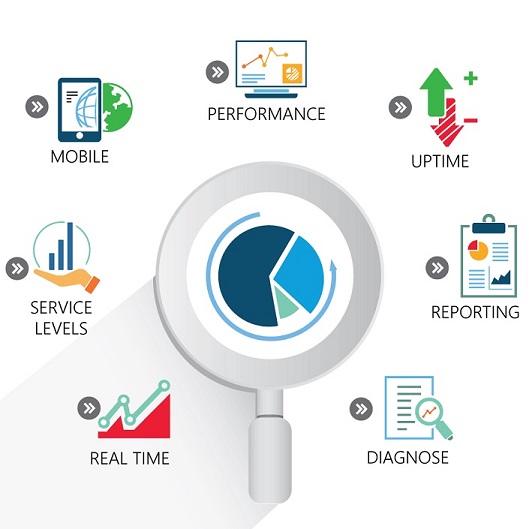Digital Experience Monitoring (DEM) is a growing practice within IT organizations that provides insight into all the factors that make up the application and desktop User Experiences (UX). Proper DEM solutions emphasize the user experience by identifying and monitoring first — AND third — party systems to ensure they are performing correctly. Improving end-to-end digital experiences leads to enhanced productivity and increased ROI for the entire business.
As systems become more complex and IT loses direct control of infrastructure (hello cloud), it becomes both more difficult and more important to capture and observe, holistically, the user experience. SaaS or cloud apps like Salesforce, Microsoft Office 365, and Workday have become mission-critical to most businesses and therefore need to be examined when it comes to experience monitoring.
End-Users Don't Differentiate Where the App Comes From
Monitoring employee digital experiences for third-party cloud and Software-as-a-Service (SaaS) is just as important as understanding how internally developed applications are performing. End users sometimes don't know where an app is coming from or who is responsible when its broken. They just want Information Technology — IT — to work.
With the growing use of APIs and application integrations between cloud and on-premises applications, end-user experiences depend on an entire eco-system of data that may be in any number of different regions, networks, computers, clouds, and systems.
Measuring what matters most — end-user satisfaction and efficiency — provides valuable insight into the entire Service Delivery Chain and underlying infrastructure. A real-time user experience view of applications, network and devices no matter where the application is located is the true goal of Digital Experience Monitoring.

Figure 1 Business Critical Service Delivery Chain
Let's further examine real-world use cases for SaaS Digital Experience Monitoring.
Holding Vendors Accountable, Recovering Service Credits
Holding vendors responsible for their guarantees is an important value proposition that comes out of a Digital Experience Monitoring strategy. It's especially important in this day of cloud and SaaS migrations, branch office networking or remote telecommuting. Nowadays, every service provider offers Service Level Agreements (SLAs) that include uptime and performance standards. A DEM solution will provide response time and availability metrics that can be used to demand service credits or recover SLA violation dollars.

But if a tree falls in the woods, is there anyone around to hear it?
You must measure the employee digital experience to ensure Office 365, Azure and the dependent network services are performing well and are consistently highly available. Typically, DEM solutions leverage a combination of Synthetic Transaction Monitoring (STM) and Real User Monitoring (RUM) to ensure the uptime, response and the availability of applications. You will want to look for a platform that covers both methodologies for your application portfolio.
Ease of Deployment, Ease of Use
With the work-from-home conditions that are prevalent today, a proper DEM solution should be easy to deploy, setup, update and re-target. When you have home users to support or branch offices that may not have dedicated IT departments, a DEM solution should be self-service, self-healing, and self-updating. Having these characteristics improves the return-on-investment.
Improving Employee Productivity
Capturing metrics for the employee digital experience — the apps, services, and devices — is a core value proposition for DEM. Customer experience (of IT) is paramount to end-user satisfaction. And with today's extremely low unemployment rates, especially for technical users, keeping every employee happy and productive is critical to the function of an enterprise's IT division.

A DEM strategy within IT organization's helps with:
■ Optimizing the function of business units
Visualizing application and SaaS performance from the user perspective provides comprehensive view of business apps. Often those business apps entail Outlook/Exchange, SharePoint, Skype, Teams and Microsoft Dynamics or Salesforce. The day of sitting completely in front of custom applications is long gone.
■ Minimizing disruption and end-user complaints
Knowing ahead of time when outages occur no matter where the user is located or for any app is critical. Proactive notification is the cornerstone of synthetic transaction monitoring as part of DEM and should be required for SaaS-monitoring.
■ Reducing support tickets and Mean Time to Resolution when something goes wrong
Application errors and outages affect employee productivity; DEM solutions improve real time root cause analysis and long-term cataloging of problems.
■ Increasing transparency among different IT roles and responsibilities
A successful DEM deployment will benefit different personas within IT including Application Owners, the Helpdesk, Network Administrators and finally your CIO / CTO. Eliminating or reducing the blame game when pinpointing issues between internal teams and vendors like Microsoft or Salesforce is critical.
Go to Why Bother with Digital Experience Monitoring for SaaS Apps? - Part 2
